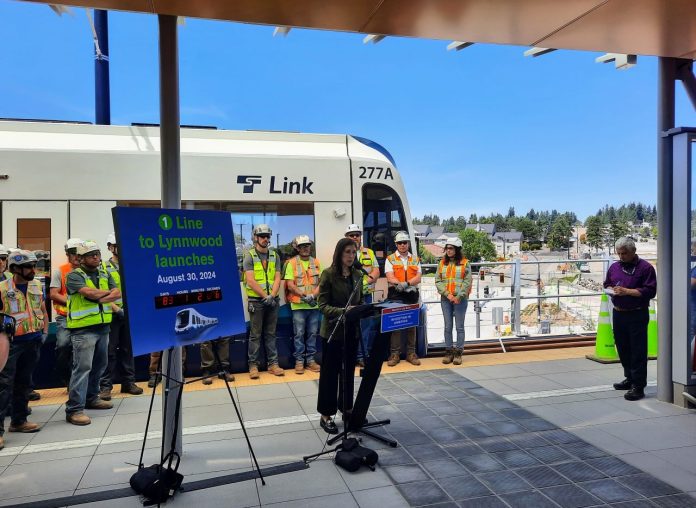
Sound Transit held a ceremony Friday to celebrate the start of pre-revenue testing for the 8.5-mile Lynnwood Link light rail extension in anticipation of the line’s grand opening on August 30. Dignitaries stood on the platform at Lynnwood City Center Station next to a countdown clock that noted the 83 days to launch, which has ticked down to just 80 days as of Monday.
With the start of service, Lynnwood will become the northern terminus for Sound Transit’s light rail system until an extension north to Everett opens by 2037. Tri-county voters approved Lynnwood Link extension as part of the Sound Transit 2 ballot measure in 2008, while the Everett extension was part of the Sound Transit 3 measure approved in 2016.
Snohomish County Executive Dave Somers joked that countdown clocks made him nervous given his age and experience with infrastructure delays. On a more serious and reflective note, he joined other speakers in stressing the transformative nature of the project for the city of Lynnwood and the rest of the county. Buoyed by transit-oriented development, Snohomish County was the fastest-growing county in Puget Sound in 2023.
“I want to congratulate the City of Lynnwood, the mayor, and mayors before you and city councils, and everybody that really had a vision 20 plus years ago and started the planning and permitting process that really kicked off the transformation of Lynnwood,” Somers said. “I’ve been here working in the county since the 70s. And Lynnwood used to be kind of known as a city without a place, without a center, and it certainly is not that now. The transformation already just in anticipation of light rail, it’s been just amazing. And standing here a few minutes ago thinking what this place is going to look like in 10 years. It’s really mind boggling; this really will become the center of the transportation hub for Snohomish County.”
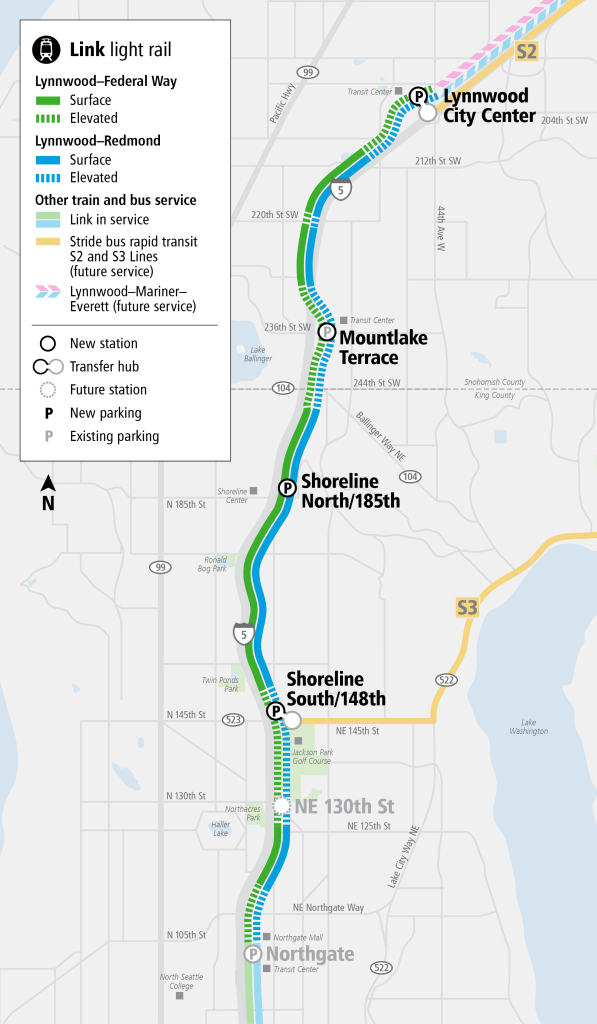
In her remarks, Lynnwood Mayor Christine Frizzell emphasized Community Transit’s bus restructure will make Lynnwood even more of a transit hub for the county, jokingly screaming “buses everywhere” in mock horror.
“This also allows our partners at Community Transit to restructure their bus network to provide more frequent service and better regional connections supporting a multimodal structure for mobility,” Frizzell said. “I’m told that about half of the routes that Community Transit will be providing will touch this station, and that excites me, and, at the same time, it’s like ahh buses, buses everywhere…”
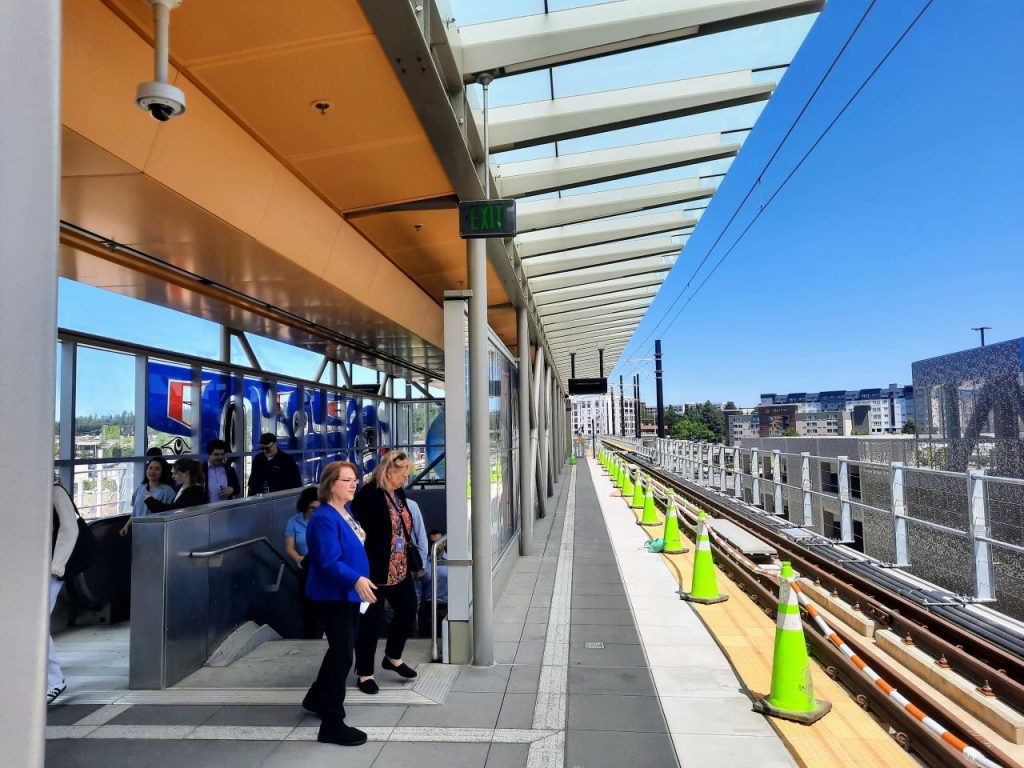
Community Transit recently launched the Swift Orange Line, greatly improving bus connections to Lynnwood City Center. The rest of Snohomish County’s bus restructure will wait for September 14 — two weeks after the launch of the light rail extension — as part of the fall service change. Lynnwood recently wrapped up a major expansion of its main east-west corridor of 196th Street SW, with the goal of moving more car traffic but also providing more reliable bus trips and adding pedestrian space.
While most of the growth has taken place several blocks from the immediate station area, which continues to be largely parking lots and construction staging, Lynnwood has already added more than 3,000 homes in its “City Center” neighborhood. This had led some of the city council to grow pensive and contemplate pumping the brakes — although a majority ultimately greenlit additional growth. Frizzell pledged that the Lynnwood Comprehensive Plan, which is due for an update by year’s end, would continue to support efforts to add housing near light rail for people at all income levels.
“Lynnwood’s comprehensive plan update and housing action plan supports these outcomes and focuses on housing for all levels of income in our city center,” Frizzell said. “With this goal, Lynnwood looks forward to working with Sound Transit and their housing partner, Housing Hope, on plans for affordable housing adjacent to the Lynnwood City Center Station. That collaboration is made possible by Sound Transit’s Equitable Transit-Oriented Development program.”
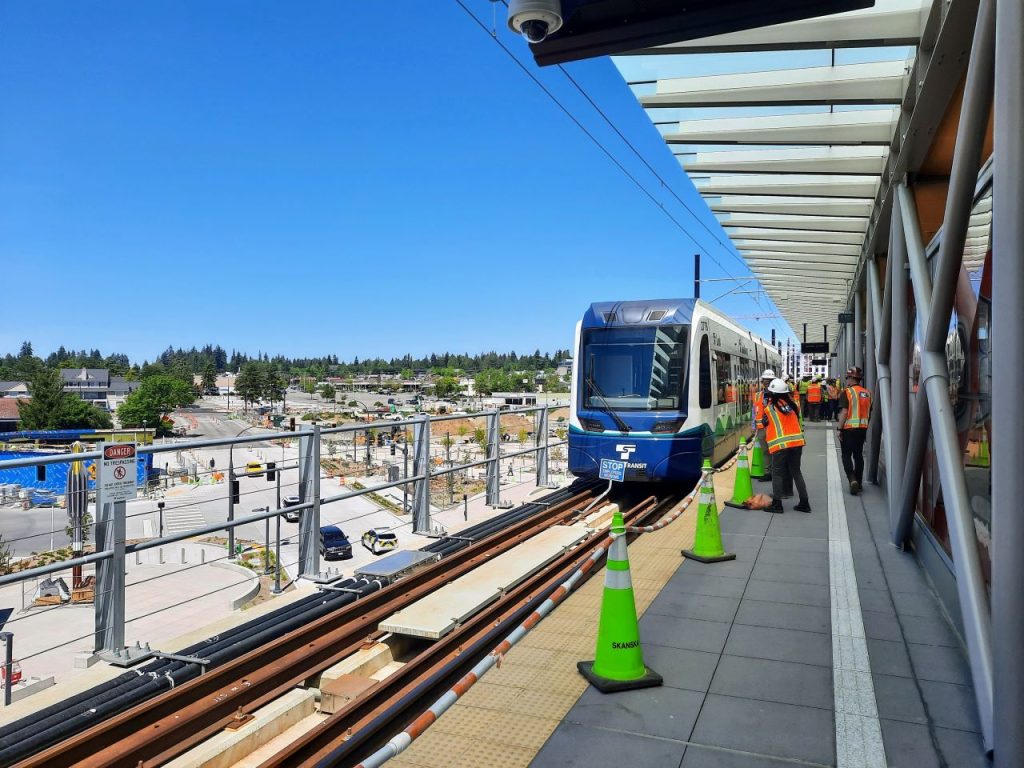
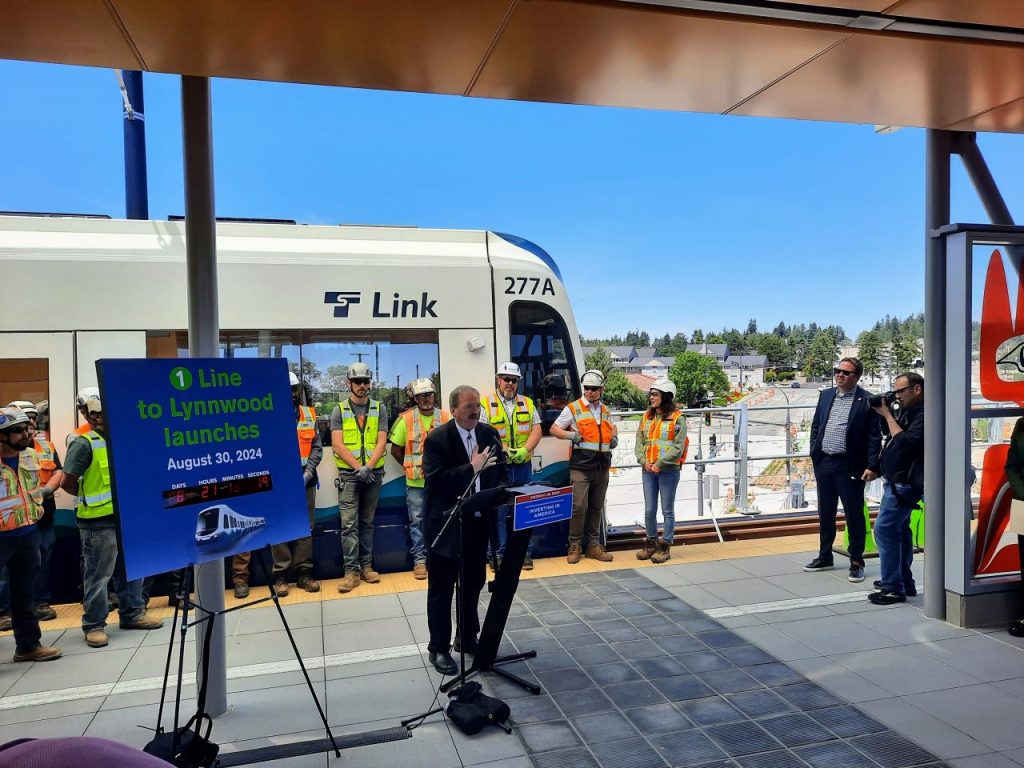
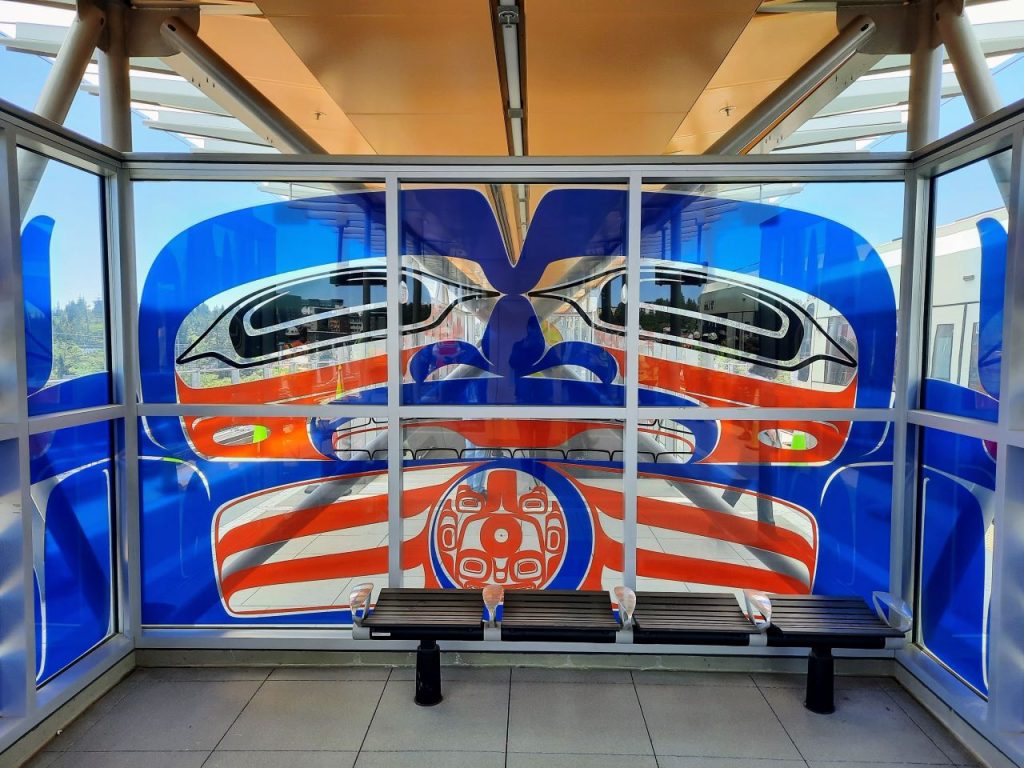
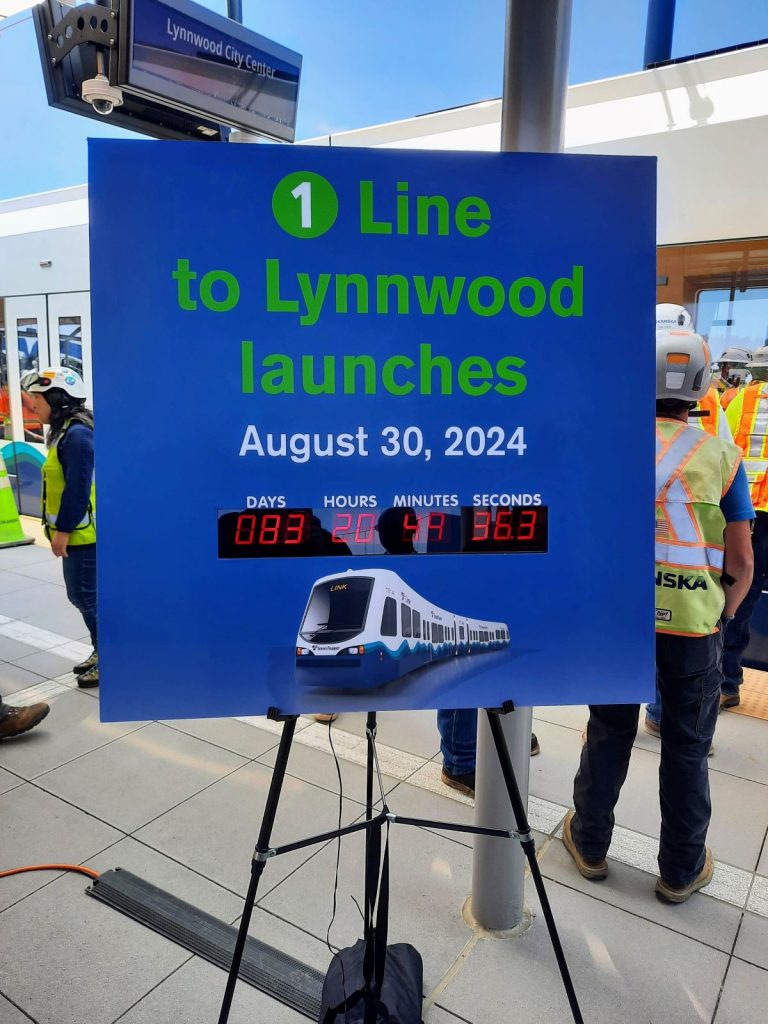
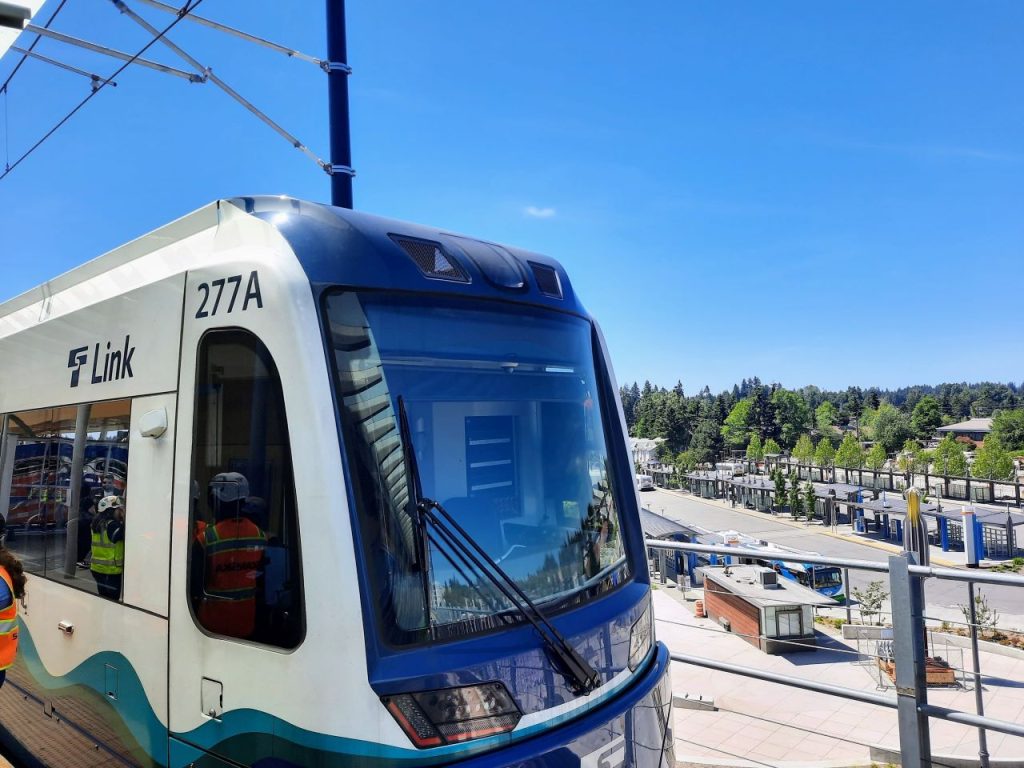
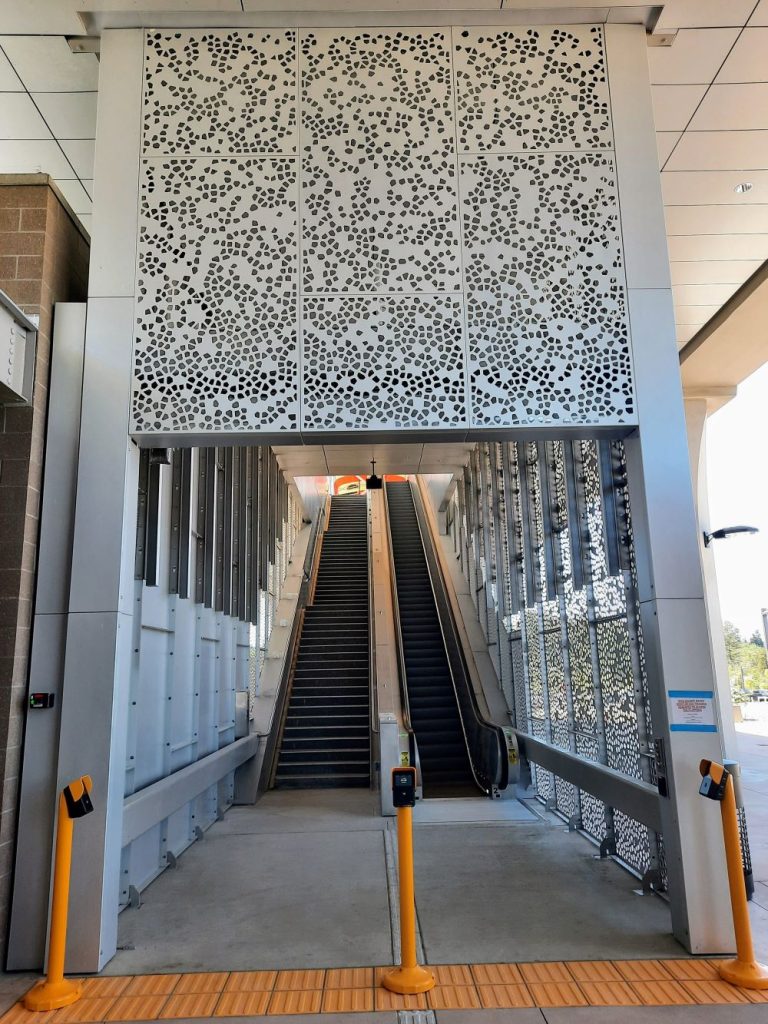
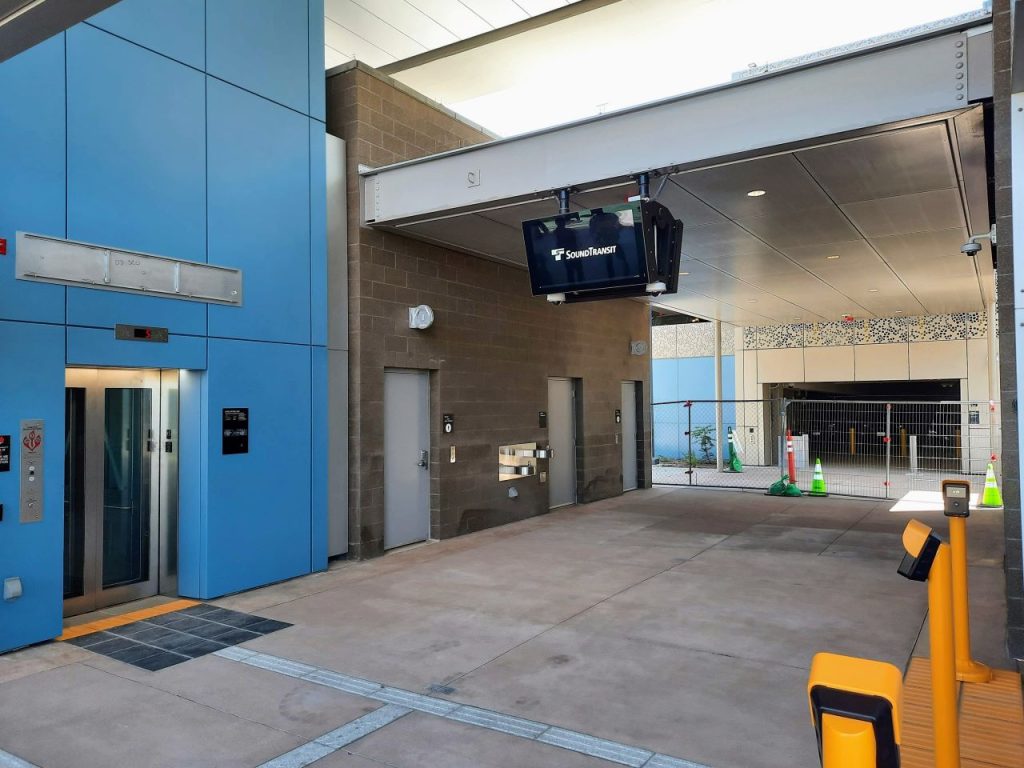
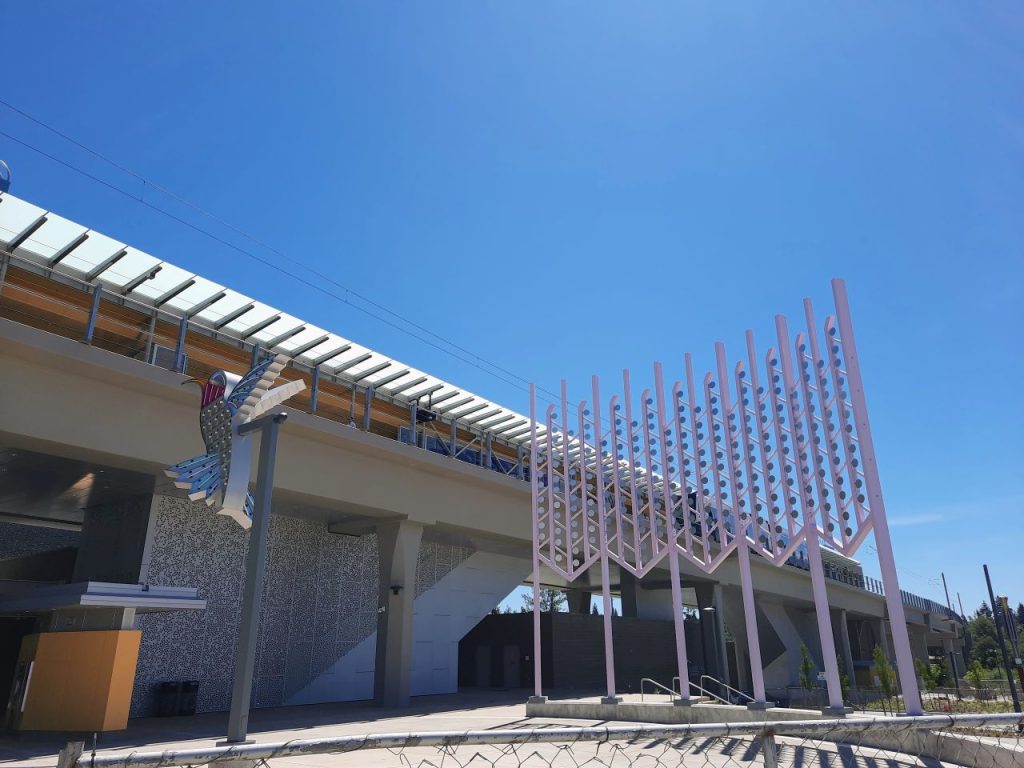
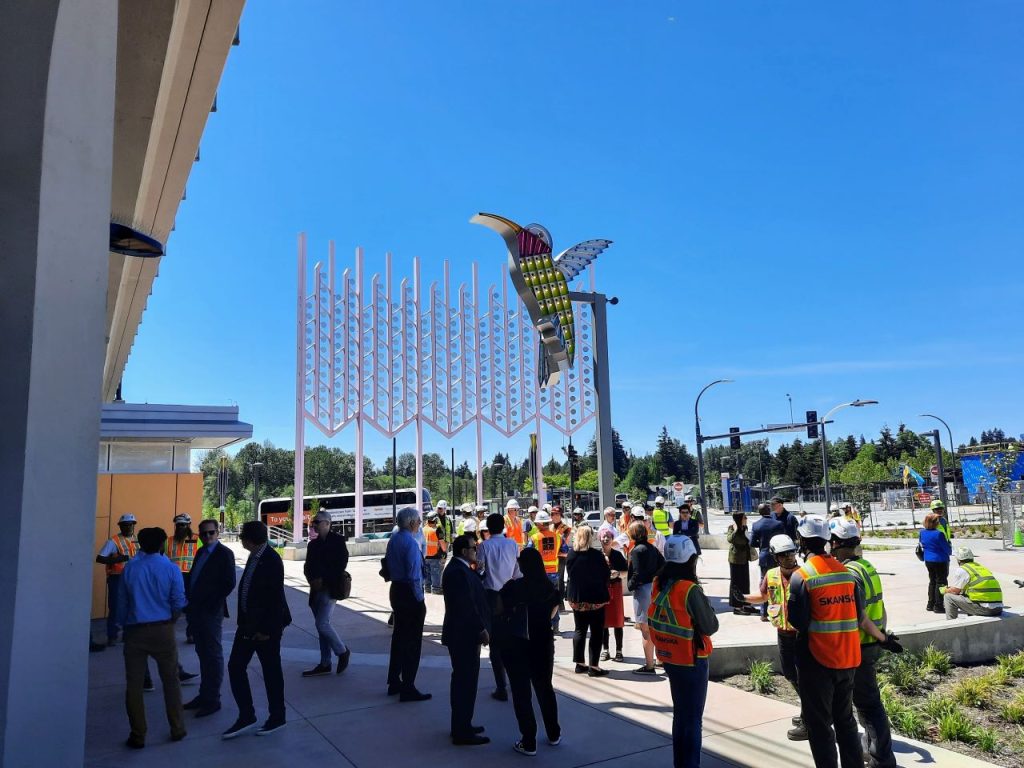
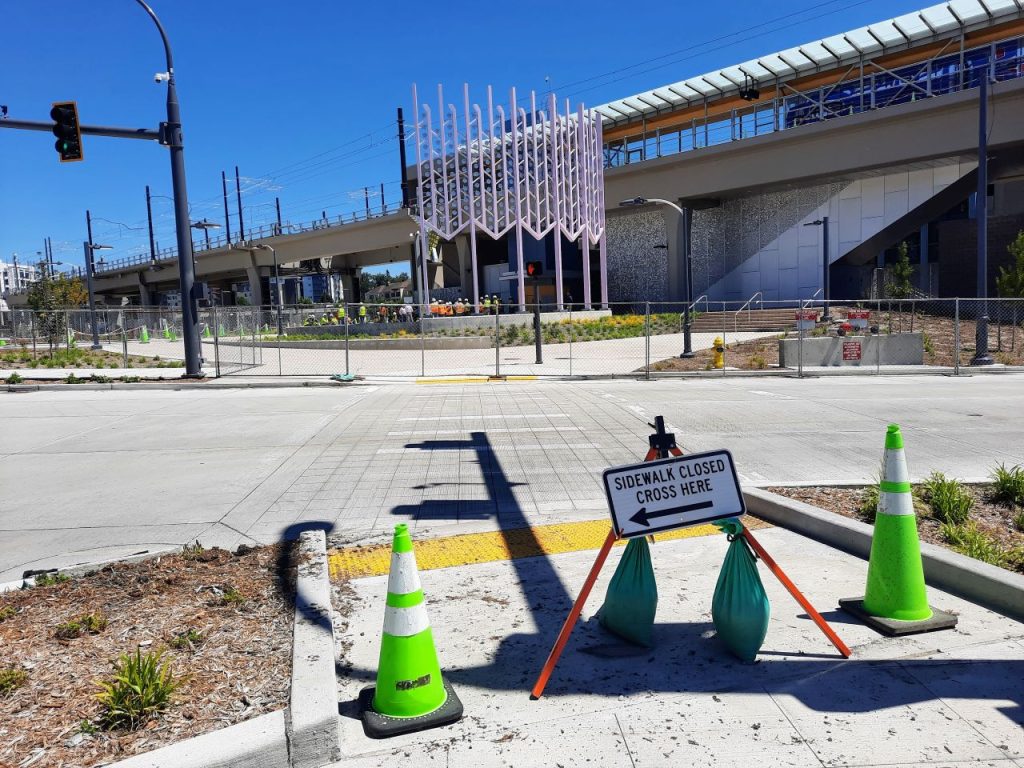
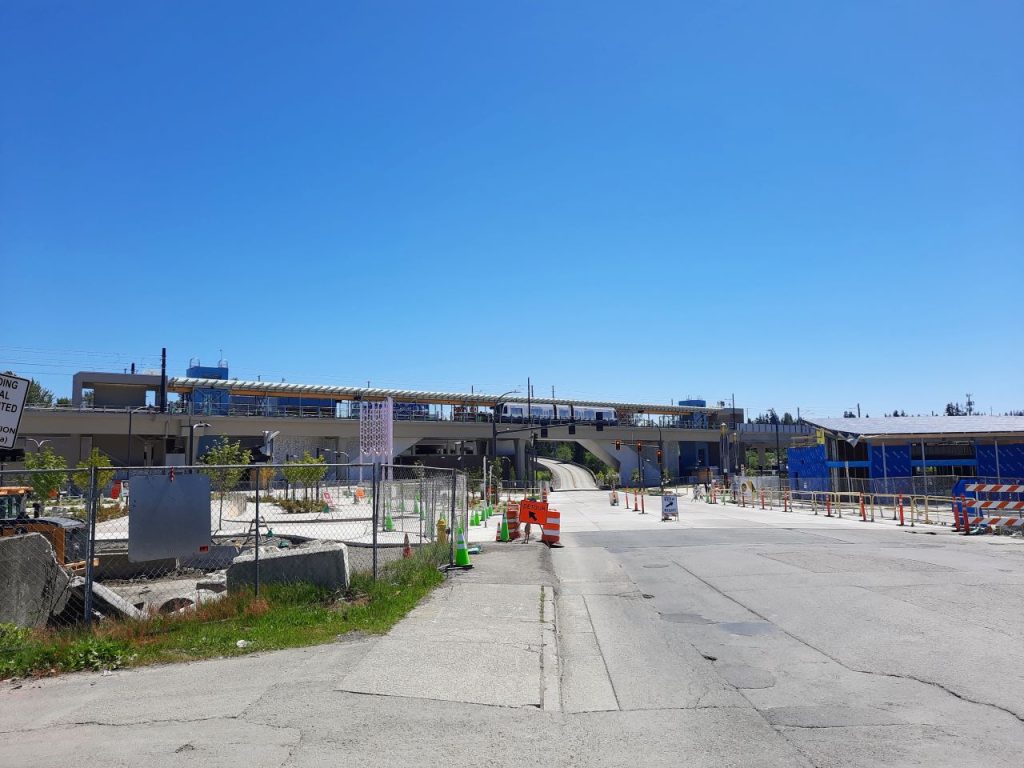
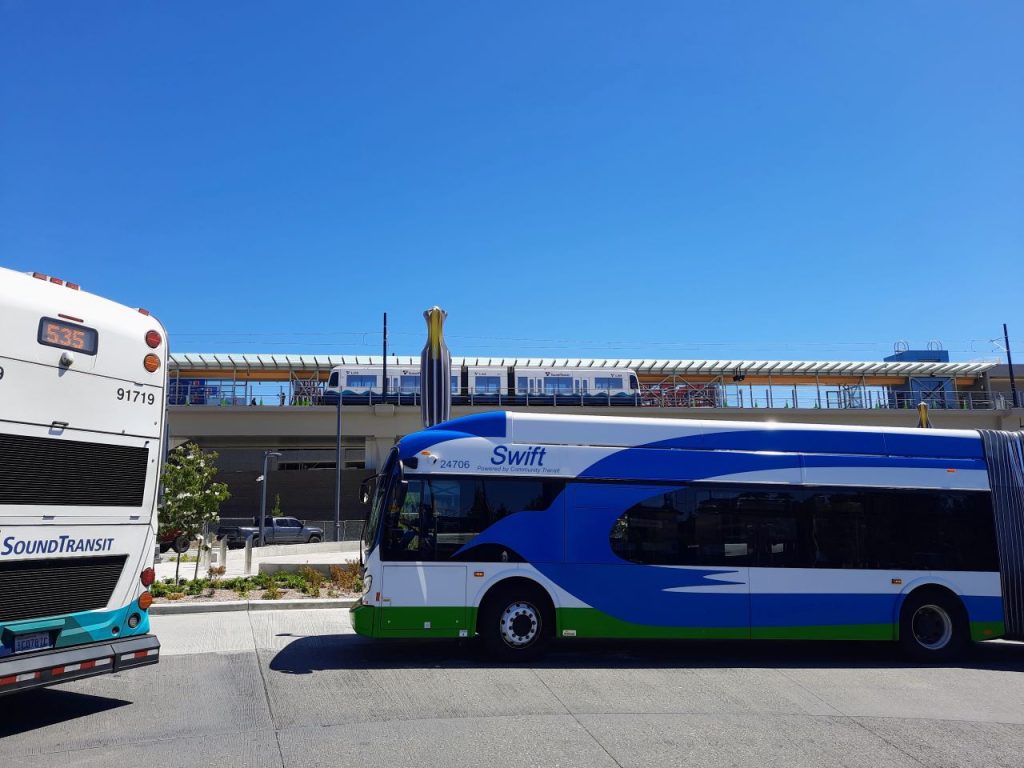
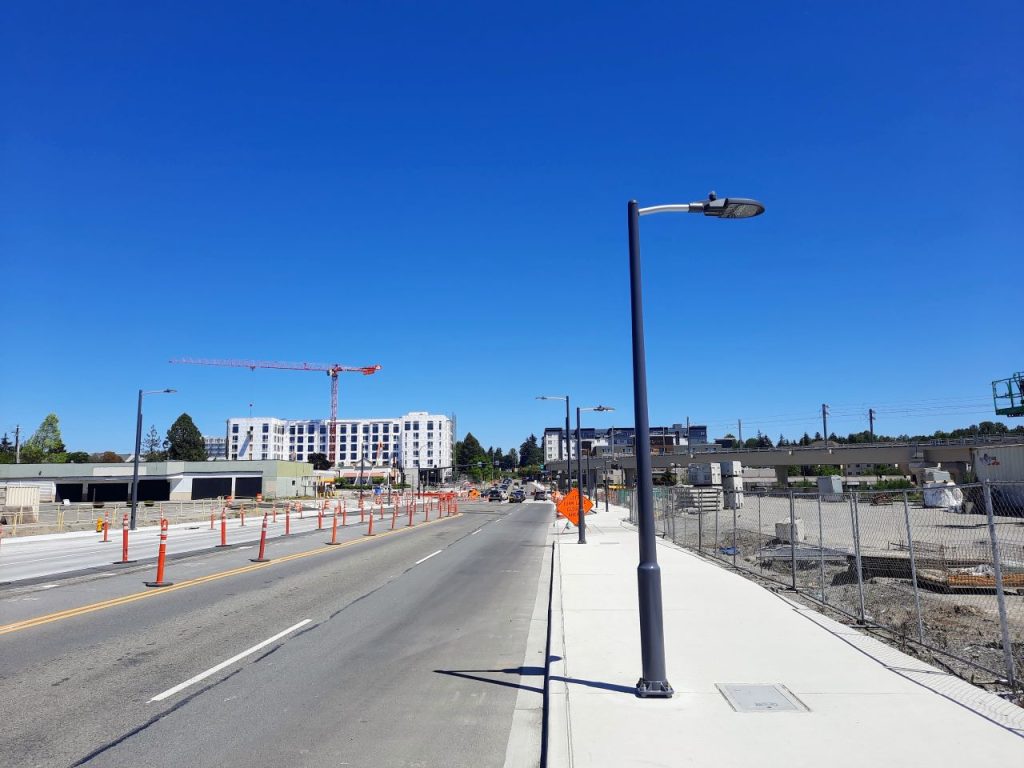
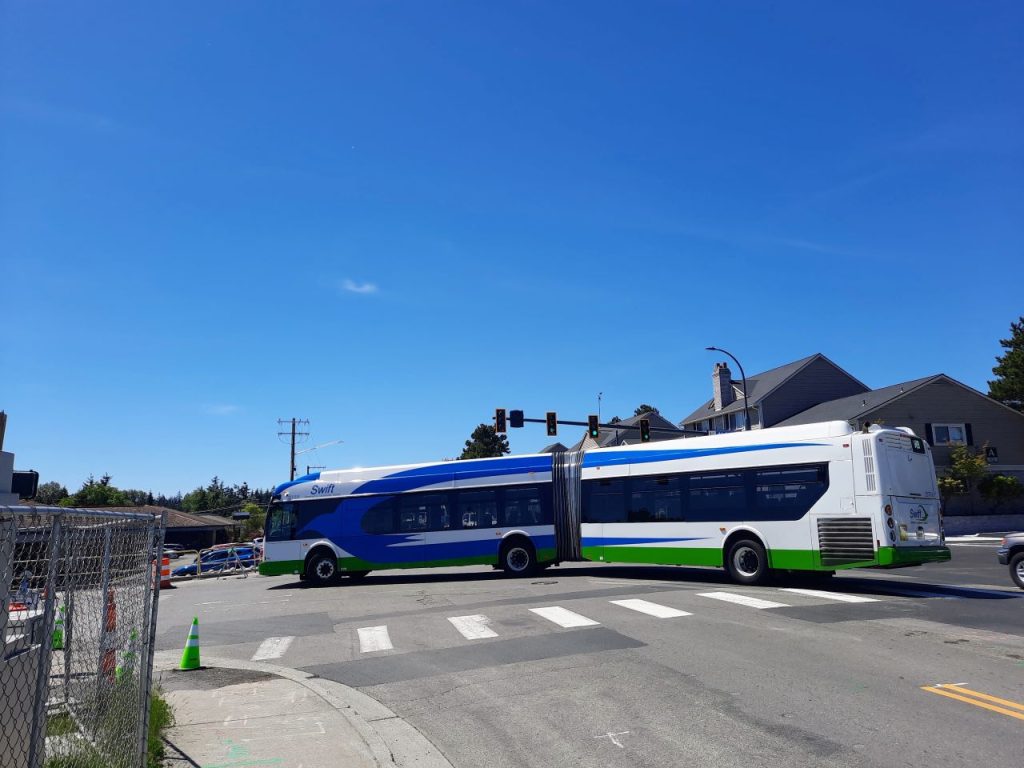
The Lynnwood extension will bring four more 1 Line stations online: South Shoreline, North Shoreline, Mountlake Terrace, and Lynnwood City Center. An additional in-fill station at N 130th Street in Seattle (eventually to be accompanied by a zoning overhaul to grow a neighborhood around it) will open by 2026.
Benefitting from two Link stations, Shoreline is also adding thousands of homes near its improved transit network. Mountlake Terrace has similarly made its station area the focal point of its growth plans, although it has thus far experienced less of a homebuilding boom than its neighbors.
The Federal Transit Administration (FTA) had an envoy on hand in the form of Deputy Regional Administrator Scot Rastelli. Lynnwood Link’s $3.26 billion project budget includes a $1.17 billion grant executed by the FTA. “In addition, the U.S. Department of Transportation’s Build America Bureau executed a $658 million low-interest loan supporting the project, including new light rail vehicles and support facilities,” Sound Transit noted.
In his remarks, Rastelli stressed that transit expansion is a key part of President Biden’s climate strategy and its goal to cut greenhouse gas emissions in half by 2030, measuring from 2005 levels.
“In 2022, Sound Transit helped the region offset […] the equivalent of burning about 22 million gallons of gasoline,” Rastelli said. “And this project will increase that offset by taking tens of thousands of people out of their vehicles, and onto a system energized with renewable hydroelectric power.”
Light rail will have a strong draw due to heavy traffic congestion on I-5, which was already on full bumper-to-bumper display during the 1:30pm Friday press event. Buses account for only 2% of the traffic on I-5, but move nearly 9% of the people on the corridor.
“It’s an extremely important project,” Rastelli said. “I don’t need to tell this group but the I-5 corridor between Lynnwood in Seattle is the most congested, unreliable corridor in the entire state. This light rail extension will provide thousands of new riders with a fast, frequent, reliable mode of travel.”
Sound Transit projects that Lynnwood Link will add 47,000 to 55,000 daily riders to the system by 2026, although that projection was made before the pandemic sapped some regional ridership momentum. On the existing 1 Line, average weekday boardings peaked around 90,000 in July 2023, a record-setting transit month, and averages have generally hovered around 80,000 daily riders since.
Sound Transit’s new megaproject czar Terri Mestas (hired away from Los Angeles’ LAX) also spoke, noting the momentum the project provided by coming in within budget and mostly on-time. Mestas is tasked with building on the momentum as she oversees the large capital projects that will expand the Sound Transit system.
“I’m the deputy chief executive officer in charge of delivering our $75 billion system expansion, which is the largest in the nation,” Mestas said. “Here’s what it means: extending Sound Transit’s current 35-mile 39-station two-line system into a 160-mile, 83-station world class system over the next two decades. Lynnwood Link Extension is the next piece of that incredible expansion. This is a signal to the region that we are all systems go on expanding our reliable, traffic-free service across the region and bringing it to tens of thousands of new riders.”
With the opening of Lynnwood Link, fares on the Link 1 and 2 Lines will go to a flat $3 fare. This will represent a fare hike for shorter trips, but for a smaller share of long-distance riders, flat fares will mean a fare break.
Trains heading to and from Lynnwood will run on lower frequencies than promised until Sound Transit is able to boost its fleet capacity with the full opening of East Link light rail across Lake Washington to the currently marooned train base in Bellevue’s Spring District. The 2 Line opened in an abbreviated form in April. Construction defects have delayed the opening of the I-90 segment of the 2 Line, but agency officials confirmed Friday corrective work will still appears to be on track to open that segment in late 2025, which would allow a full opening of the 2 Line and access to added train base capacity.
“We’re less than three months away from the opening of the Lynnwood extension,” Somers said. “Each milestone brings us that much closer to fast, reliable light rail service that Snohomish County residents have been wanting and needing for years. I’m thrilled that we will finally be able to ride Link and enjoy the economic, climate, and community benefits that it will bring to the county.”
Doug Trumm is publisher of The Urbanist. An Urbanist writer since 2015, he dreams of pedestrian streets, bus lanes, and a mass-timber building spree to end our housing crisis. He graduated from the Evans School of Public Policy and Governance at the University of Washington in 2019. He lives in Seattle's Fremont neighborhood and loves to explore the city by foot and by bike.

